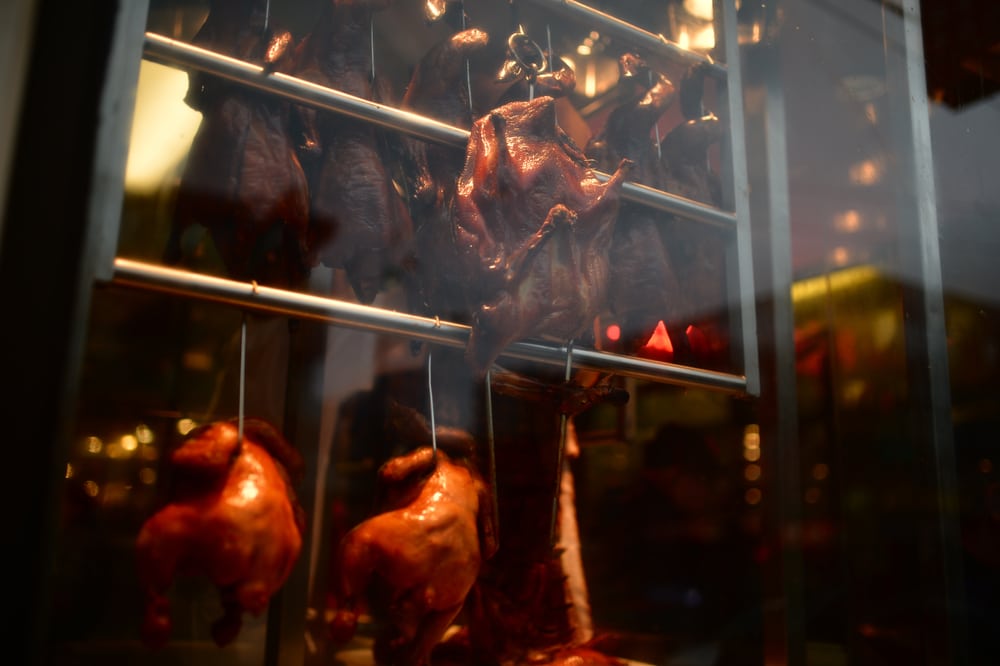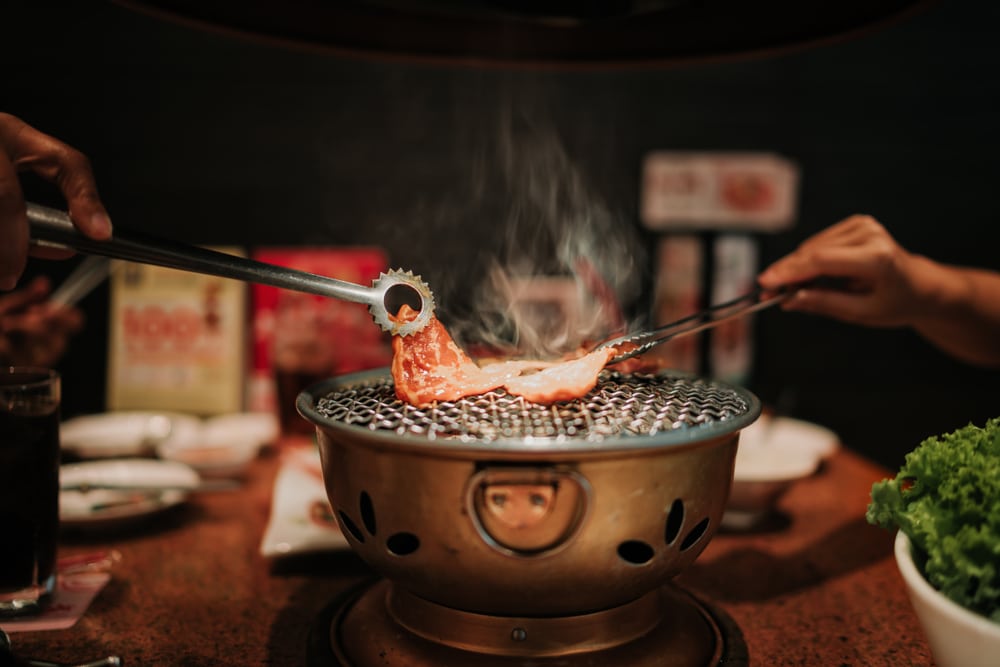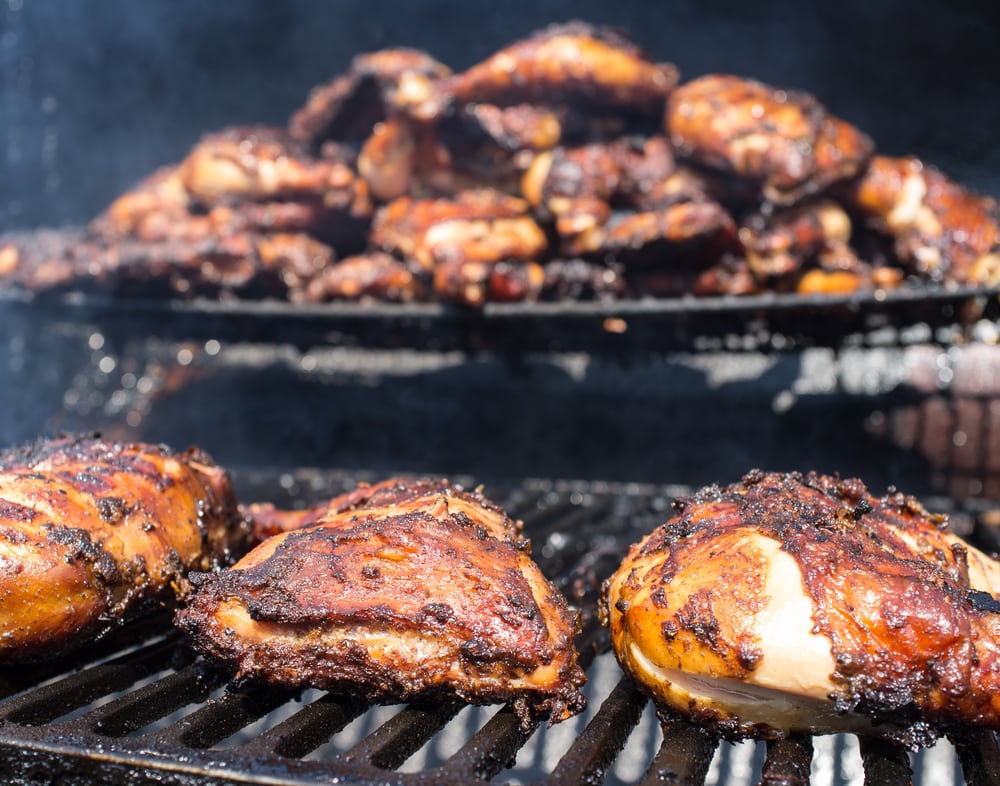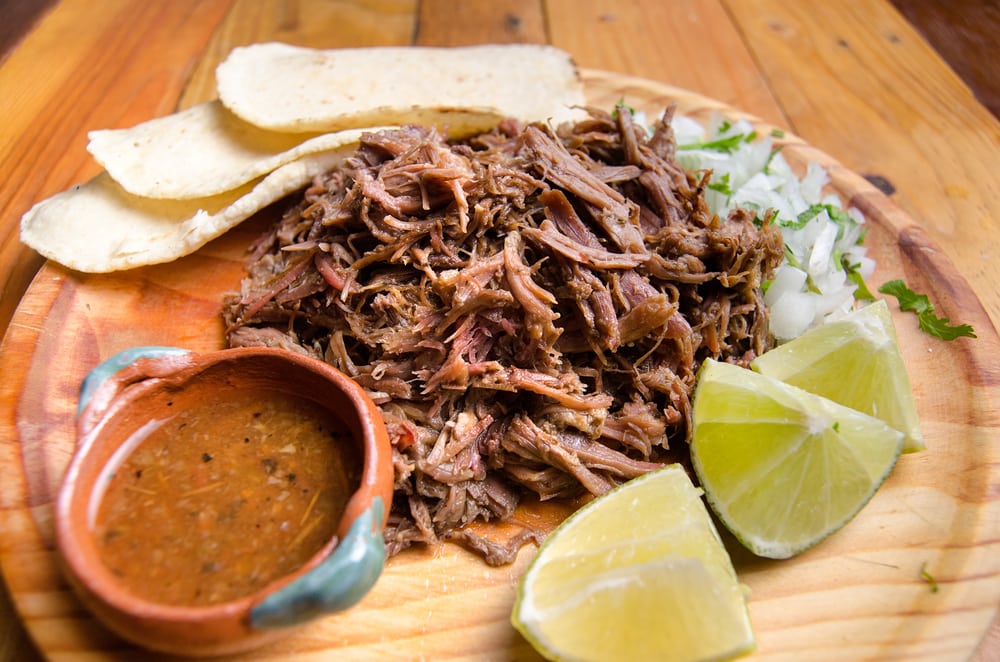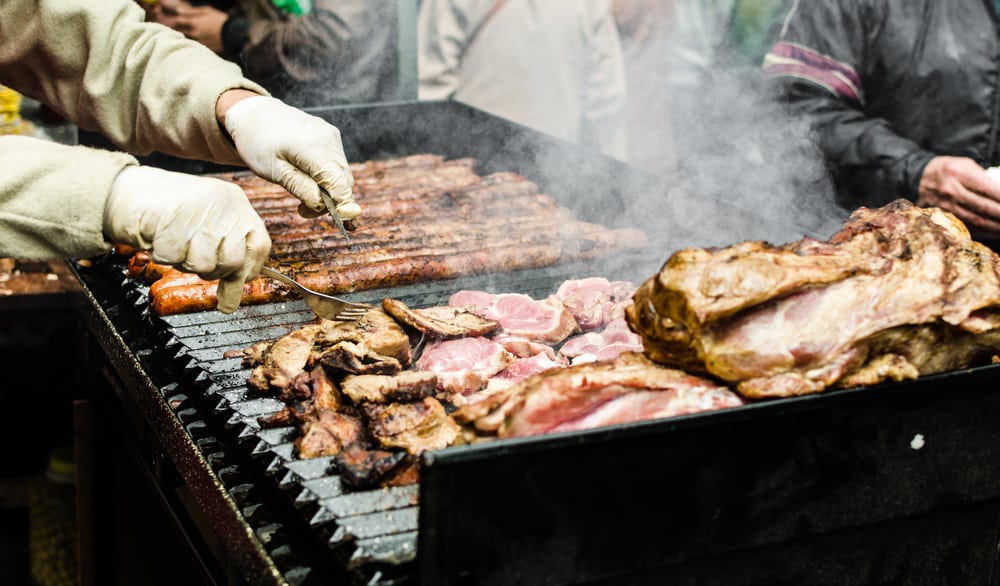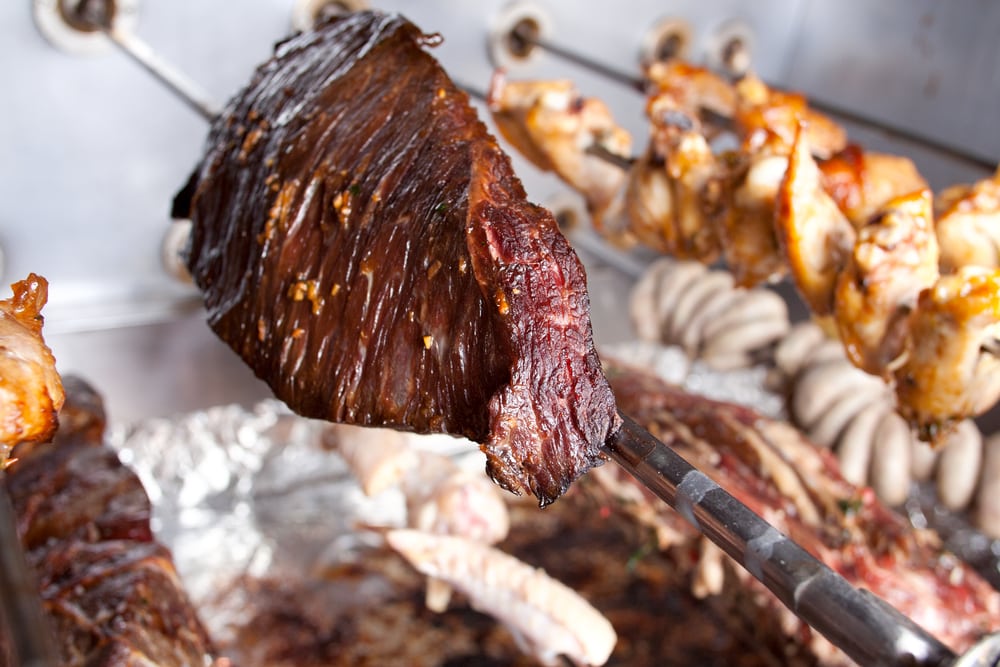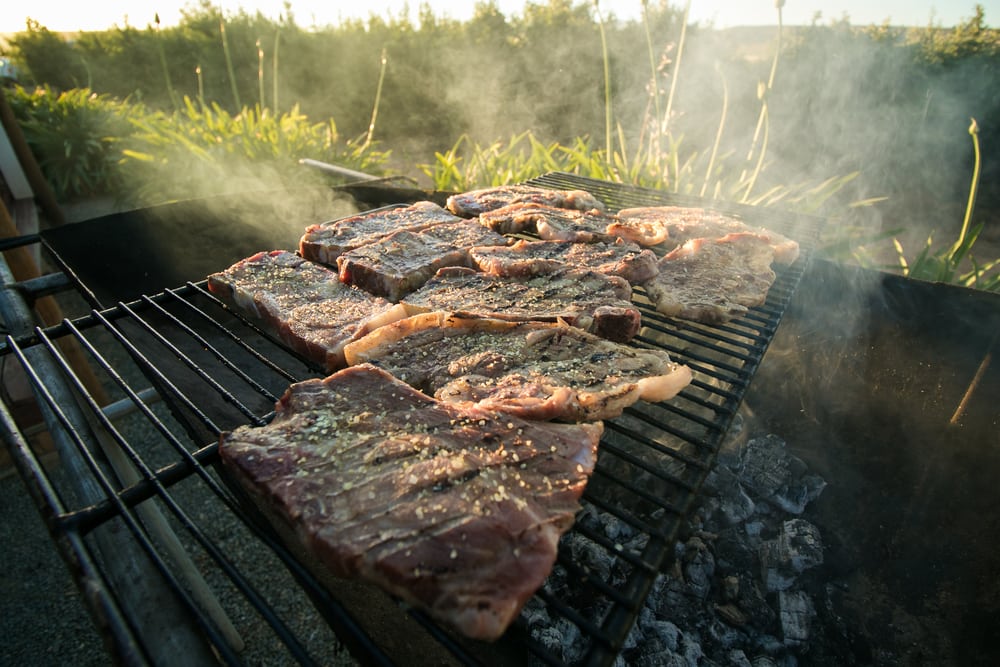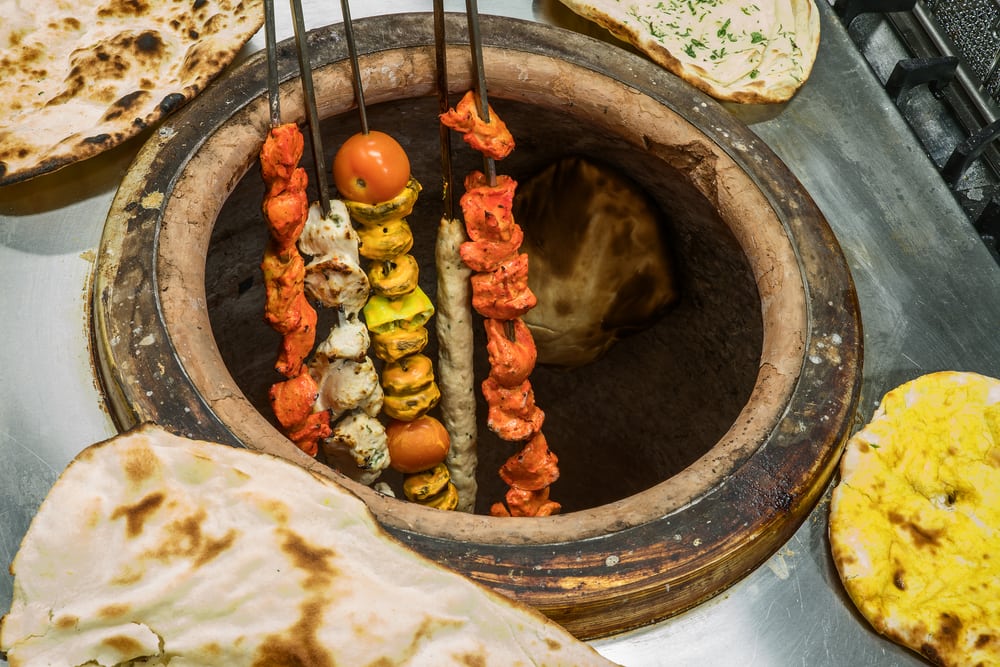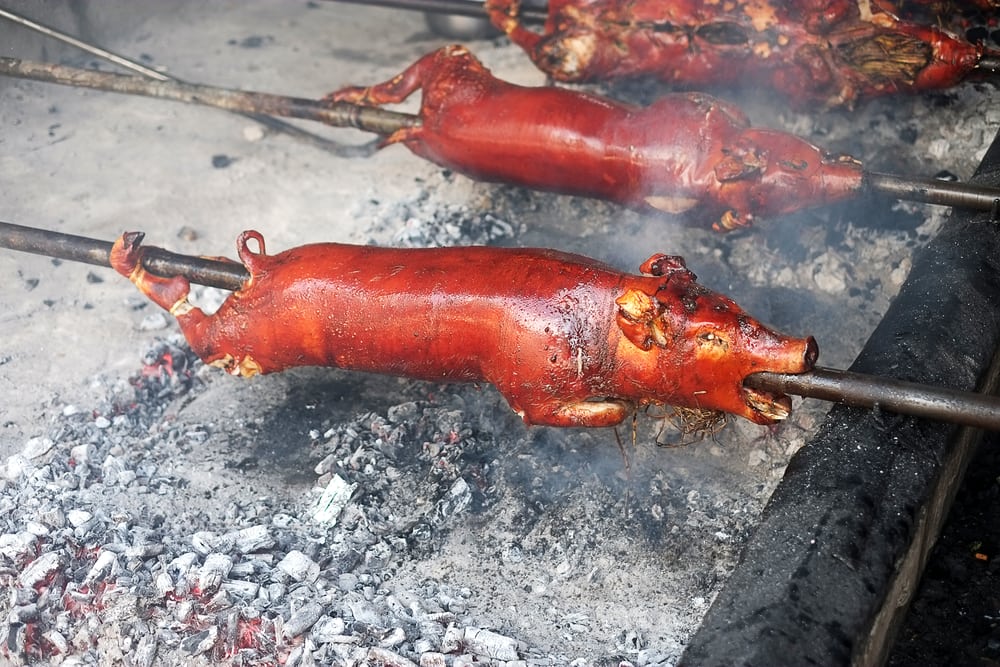When it comes time to eat, flocks of people choose to plunge hunks of meat into an open flame. Yes, nearly every culture loves to fire up meats in the grill, in a smoker, or even in the ground. You may be familiar with American styles of barbecue, but there’s a range of global barbecue styles out there, too. Whether it’s pungent, lemongrassy Cambodian skewers or whole grilled fish from Croatia, with a smokiness imparted by olive wood.
Whether we should call those dishes “barbecue” is fiercely debated. Somewhere along the way, people drew a line in the sand between “barbecue” and “grilling.” An American pitmaster, in fact, may scoff at you for confusing the two. But others are more lax about this, so long as there is wood or charcoal to char, steam, or smoke. No matter which side you’re on, an open mind makes for tastier eating. Here’s our primer on some of the most delicious global barbecue styles, to complement our other obsession, American barbecue.
1. Chinese Siu Mei
When the Chinese population began to surge in America, in the mid-1960s, Chinatowns were dotted with shops selling spit-roasted meats. Those shops offered Chinese-American laborers take-out meals called siu mei, built on those roasted meats. Eventually, those meals were adapted for American palates. Of all the global barbecue styles, Cantonese siu mei is a visual stunner. Stroll through a Chinatown, and you’ll see glossy roasted ducks, chickens, and pigs hanging enticingly in windows, fork ready.
About the Global BBQ Style: Siu mei cooks hang meat in roasters blasting high heat. This makes for the crispiest skin imaginable and a juicy, sweet interior. As siu mei is largely a takeout cuisine, a choice of two meats and a side is perfect for feeding the office.
Must-Order Dishes: For the sweetest pork dish with a hint of five-spice, go for barbecued char siu. For crispier skin, roasted pork (siu yuk) is a touch leaner but far cracklier. There’s also juicy roast duck (siu aap) with a side of white rice and plum sauce.
2. Korean Gogi Gui
While other Asian cuisines bended to the American palate, Korean didn’t budge. Instead, dedicated Koreatowns in American cities including New York, Los Angeles, and Atlanta stayed true to their barbecue tradition and let the foodie revolution come to them.
About the Global BBQ Style: Pork and thinly sliced beef are the main meats here. They arrive at your table raw, ready for grilling at your table set with a grill. The cooking makes for a fun activity with a group of friends. Most servers will do the grilling for you, adjusting the heat and setting aside the grilled meat. Complementary banchan, small plates of sides like kimchi and marinated vegetables, come along with the meal.
Must-Order Dishes: The popular bulgogi is usually cut from sirloin or tenderloin, then seasoned with soy, sugar, garlic, and rice wine until soft and tender. Boneless kalbi short ribs bring a similar sweet flavor. Steamed egg makes an excellent side, as does dukkochi, a crispy rice cake with spicy sauce. If you can’t tend the grill on a Monday afternoon, have bulgogi delivered to the office.
3. Jamaican Jerk
Jerk began with Taino Indians, who lived on Jamaica and used island spices to preserve (primarily boar) meat. Their method of cooking was altered by the influence of the Maroons, or Africans who were brought to Jamaica as slaves. The pit cooking of the Maroons influenced the style of barbecue known as Jamaican Jerk beloved today.
About the Global BBQ Style: Jerk seasoning favors Caribbean allspice, which is traditionally thrown in both the spice blend and cooking wood. Fragrant thyme, fresh ginger, and hot Scotch bonnet peppers are blended for a dry rub that balances sweet, smoky, and picante. In America, jerk usually refers to chicken or pork cooked over charcoal smoke. It will be spicy, but not only spicy.
Must-Order Dishes: For a classic jerk meal, go for a platter of jerk chicken or pork with rice and red beans or peas, sweet plantains, and steamed cabbage. You might find a fiery or vinegary sauce on the side, too.
4. Mexican Barbacoa
When Spanish colonizers observed a curious form of pit cooking they found in the Caribbean, they called it barbacoa. Today, Mexican barbacoa is one of the most beloved global barbecue styles in America today. With this method, wood or charcoal is burned in a pit oven until bracingly hot. Then, meat wrapped or covered in agave leaves steam-cooks over the course of many hours.
About the Global BBQ Style: Lamb and pork are most commonly used in barbacoa, followed by beef and goat. The meat is wrapped in agave leaves, then set in a pot with a little water or broth. This cooking method pulls mild tequila-like flavor from the leaves, and imbues this into the meat. The pulled meat is perfect for the many smoky molés and fresh, herbaceous salsas that you’ll find in Mexico. Today, a simpler method tends to be used to make barbacoa, by slow cooking the meats in an oven. The same flavor is achieved with help from smoky chilies, cumin, and cloves, and with the contrasting punch of garlic and vinegar.
Must-Order Dishes: The word barbacoa gets used fast and loose in the U.S., so depending on where you go, the pork in your tacos may only be paying homage to the style. If you’re at a legit joint, barbacoa (by way of pork, beef, or lamb) will taste like the stuff tortillas were made for. According to Tasting Table, barbacoa made with a whole sheep is the most legit. If you come across the chance to feast on that, take it.
5. Argentinian Asado
Portuguese and Spanish mariners first brought pigs and cows to the Americas. As the local population of those animals flourished, so did asado. Asado is the technique of splaying an animal on a split and slow roasting it over coals, then grilling the off-cuts directly over fire. Like the word “barbecue,” “asado” can be used to refer to the cooking technique, the food, or the social event.
About the Global BBQ Style: Argentinian asado can be made with a range of meats, but beef is usually the star. With a sprinkling of salt and a rub, it’s ready for the smoke and direct heat. At a large asado, a whole animal smokes while sausages, blood sausages, and organ meats cook on the grill. At smaller gatherings, a wood-nurtured charcoal grill slow cooks cuts of beef and chorizo. Chimichurri, a South American sauce of onions, pepper, tomato and oil, and vinegar-laced lettuce salad help cut the richness of the meat.
Must-Order Dishes: All the meat. Just try all the meat.
6. Brazilian Churrasco
Brazil takes global barbecue styles to the next level when it comes to the sheer abundance of meats, with churrasco. Churrasco is derived from Portuguese churrasco barbecue and the 19th-century gaucho (cowboy) history of cooking large cuts of meat over a fire after a long day of herding cattle.
About the Global BBQ Style: Butchered, skewered, and seasoned with only a little salt, churrasco avoids smoke. Instead, it works for a crusty char instead. At today’s churrascaria restaurants, waiters bring hot skewers of meat to the table and slice and serve these meats to patrons—as much as they can eat. This global style of barbecue usually involves cuts of red meat. But pork loin and chicken thighs are also available, and these make juicy, crispy offerings. A “salad bar” of seafood dishes, vegetables, and starches starts the meal off right.
Must-Order Dishes: Keep an eye out for picahna—the thin-cut rump is fatty, juicy, and often comes laced with a garlic or salt crust. If you see anything wrapped in bacon—scallops, filet mignon—get it. And you’ll never find juicer chicken thighs.
7. Hawaiian Kālua Pork
Polynesians first brought pigs, chickens, sweet potato, bananas, and more to the Hawaiian Islands over a thousand years ago. Waves of Asian and Portuguese-Azorean immigrants influenced Samoan cuisine. Over time, slow-steaming meat in an underground pit called an imu with the heat of hot lava stones became Hawaii’s signature, authentic barbecue style.
About the Global BBQ Style: Laulau and kālua pork are traditionally cooked in an imu with various leaves and aromatics to lightly season the protein. Laulau can be made with pork, chicken, or fish, and is steamed with taro leaves. Kālua means a whole pig covered in banana leaves; it’s slow-cooked until soft, then shredded. Nowadays, chefs may slow-cook in an oven using taro and banana leaves and liquid smoke to get the same effect.
Must-Order Dishes: With an order of kālua pork often comes an order of white rice or poi—mashed taro loosened with a little water—to help cut the richness of the meat. Raw onions, spicy chili sauce, and lomi lomi—a cold tomato and raw salmon salad—help lighten the meal, too.
8. South African Braai
Short for braaivleis and meaning “grill” in Afrikaans, a South African braai is the potluck social equivalent of the American barbecue. Even more so, throwing a braai is of such cultural significance to South Africans—a population historically rife with racial tension from centuries of native tribes, colonial immigration, slavery, and apartheid—that their September 24th Heritage Day has been officially recognized as Braai Day.
About the Global BBQ Style: Lamb and beef are commonly used. But antelope, ostrich, and local fish, native to the region, may be offered, too. Expect the heat of a dry rub with a punch of smoky paprika, garlic powder, fiery cayenne, and warming allspice; cloves, nutmeg, cumin, and coriander pull it all together.
Must-Order Dishes: Get whatever is served to you, especially if it’s something you’ve never tried before. But keep an eye out for the jerky called biltong—it highlights the best of local meat and spice.
9. Indian and Pakistani Tandoori
The bell-shaped, painted ceramic pots you have seen on home store shelves? Those are called tandoors, and they’re how cooks in India and Pakistan have baked naan bread for thousands of years. As Food 52 explains, it wasn’t until the early 20th century that a young Pakistani chef, Kundan Lal Gujral, decided to experiment, throwing pieces of marinated chicken into the oven. The results proved so successful that tandoori chicken has been one of the most beloved global barbecue styles ever since.
About the Global BBQ Style: The bright-red, tangy chicken pulls flavor primarily from a pre-bath in yogurt, garlic, ginger, turmeric, cayenne, and red food coloring. (Some may deny adding the latter, but when pushed, confess.) In some restaurants, a giant tandoor can blaze up to 900 degrees, and skewers lowered into it cook in mere minutes. With smaller pots, wood or charcoal is burned directly in the bottom. Meanwhile, the skewers are cooked over the rim, up top.
Must-Order Dishes: Tandoori chicken goes into chicken tikka and chicken tikka masala. But when cooked right, it needs nothing else than a good hit of citrus and a side of naan.
10. Filipino Lechón
Whole-roasted pig is the name of the game in the Philippines, where lechón has been the national dish for well over a hundred years. Its exact origin story can’t be traced to one culture: Early inhabitants cooked wild boar over open fires. Chinese trade missions to the islands began in the 13th century and had their influence. And other Southeast Asian islanders roasted pigs, too. Late Spanish colonization left their mark with cochinillo asado—roasted suckling pig. No matter how it came together, lechón is special-occasion Filipino fare prepared with regional flair.
About the Global BBQ Style: In the north, Luzon-style lechón is simply prepared with salt and pepper, then roasted on a bamboo spit over an open coal fire. Moving south, it may be seasoned with aromatics like leeks, garlic, and lemongrass. Dipping sauces range from a simple broth made from the pork liver and vinegar. Across the board, lechón has a signature glossy, crunchy skin that falls easily away from its layer of fat underneath, and super-sweet meat.
Must-Order Dishes: A few lumpia (Filipino egg rolls), rice and beans, a lettuce salad, and pancit (stir-fry noodles) make the feast even more of a meal. If at a family table, expect to see some sides of beef stew or chop suey, too.
Got your American barbecue styles mixed up?








